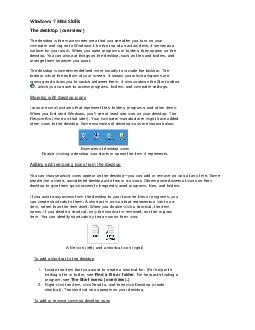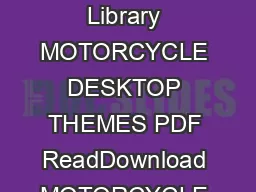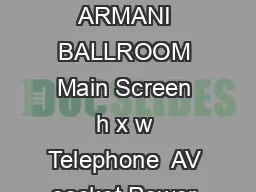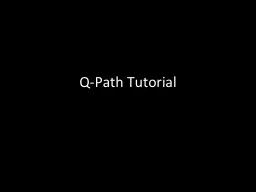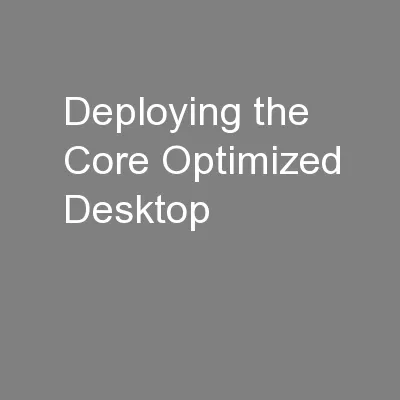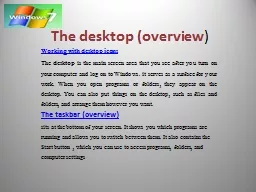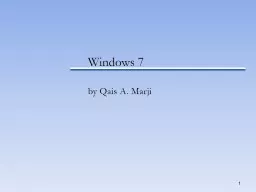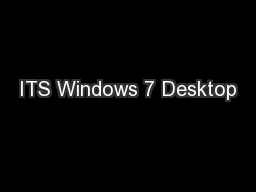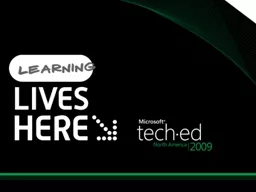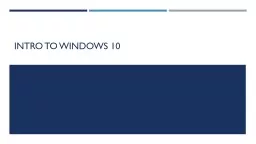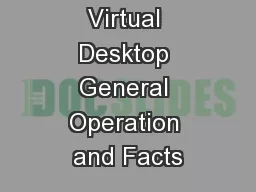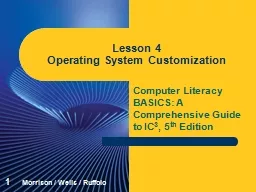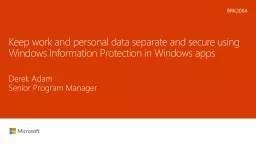PDF-The desktop overview The desktop is the main screen area that you see after you turn on
Author : alexa-scheidler | Published Date : 2015-01-17
Like the top of an actual desk it serves as a surface for your work When you open programs or folders they appear on the desktop You can also put things on the desktop
Presentation Embed Code
Download Presentation
Download Presentation The PPT/PDF document "The desktop overview The desktop is the ..." is the property of its rightful owner. Permission is granted to download and print the materials on this website for personal, non-commercial use only, and to display it on your personal computer provided you do not modify the materials and that you retain all copyright notices contained in the materials. By downloading content from our website, you accept the terms of this agreement.
The desktop overview The desktop is the main screen area that you see after you turn on: Transcript
Download Rules Of Document
"The desktop overview The desktop is the main screen area that you see after you turn on"The content belongs to its owner. You may download and print it for personal use, without modification, and keep all copyright notices. By downloading, you agree to these terms.
Related Documents

